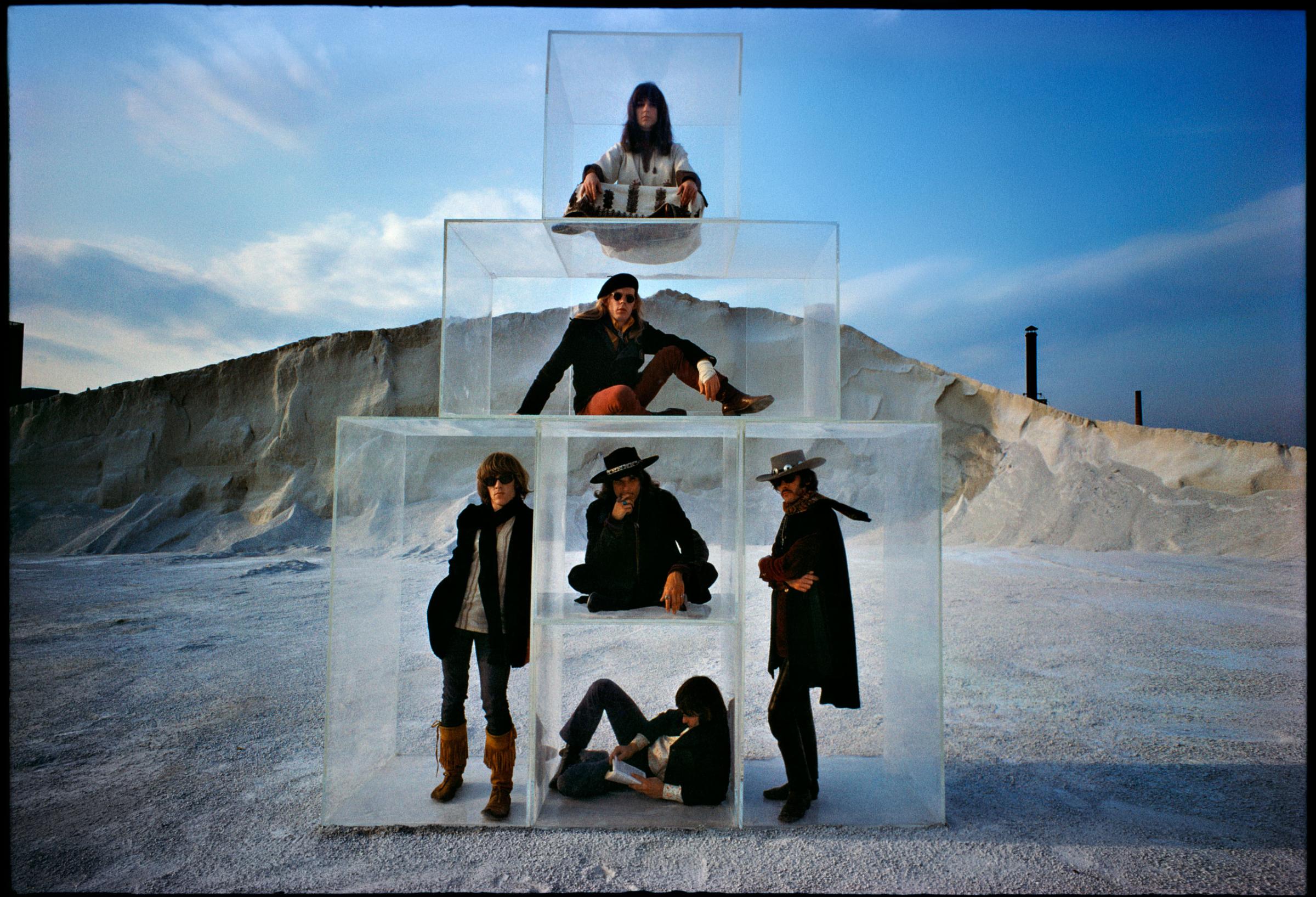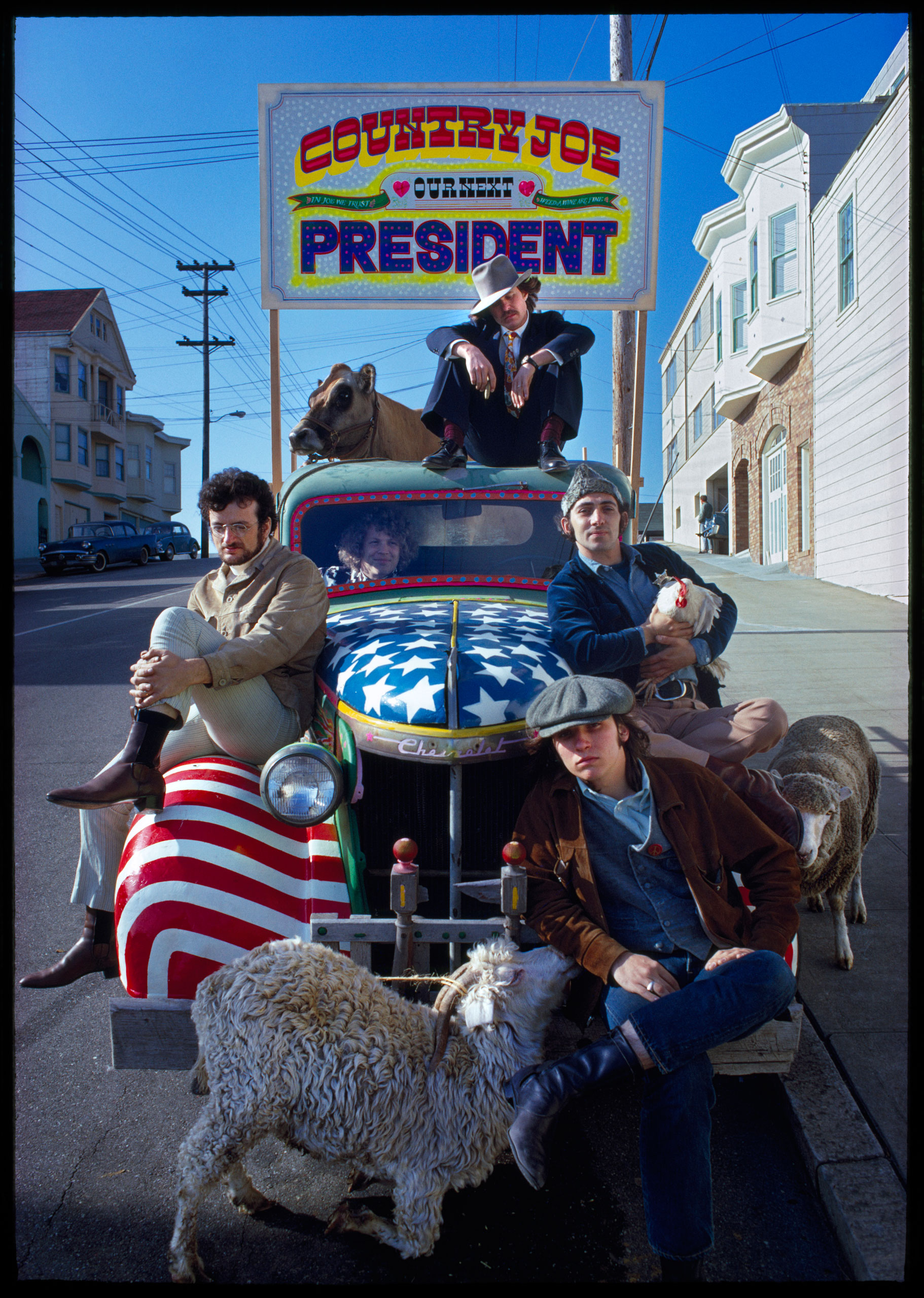
On a Sunday morning in August 1958, Art Kane waited on E. 126th Street in Harlem. He was waiting for Charles Mingus, Sonny Rollins, Thelonious Monk, Count Basie and dozens of other jazz greats he’d invited to show up for a group photo that would appear in an Esquire special issue on jazz. It had been a crazy idea to think that 57 of the biggest names in jazz would convene on one Harlem stoop, and at 10:00 in the morning, to boot. But they came. And Kane’s career as a photographer was on.
That photograph, along with more than 200 others painstakingly curated by Kane’s son Jonathan Kane and his wife Holly Anderson, fills the pages of a new book published by Reel Art Press, titled simply Art Kane. The first and only definitive collection of Kane’s work, the book provides a comprehensive survey not only of the enduring music photography that followed the “Harlem 1958” photograph, but also Kane’s work on social issues, fashion, editorial and celebrity portraiture.
After studying painting at Cooper Union and becoming, at 26, the youngest art director of a major U.S. magazine (Seventeen), Kane, Jonathan says, “was growing impatient and unhappy with putting together other people’s work.” He wanted to make his own. He went to study photography under Alexey Brodovitch, whom Jonathan describes not only as a teacher but also a “spiritual guide” to many great photographers of the 20th century, and then began booking work as a freelance photographer.
Kane approached his work, whatever the subject, as a conceptual photographer. “He would come up with an idea for his subject and make them do something that was his vision of how he wanted to interpret [them],” says Jonathan. When it came to musicians, this meant buying every single one of the artist’s records, immersing himself in the music and getting a sense of what the artists were trying to say. He would sketch the concept before the shoot, and the end result was often an uncanny photographic rendering of that initial sketch.
The first of Kane’s photographs to embody fully this conceptual vision was his portrait of Louis Armstrong, which also appeared in the Esquire issue on jazz. Kane saw Armstrong not just as an entertainer, but as the leader of a revolution in jazz. Rather than capture him playing the trumpet, Kane flew Armstrong out to Death Valley on a four-seat Cessna plane and photographed him with the sun setting behind him, sitting in a rocking chair like the one he sang about in a hit song from 1929. Says Jonathan, “It’s the story of his life in one frame.”
When Kane did a cover story for LIFE on rock musicians in 1968, he sought to make similarly singular statements in his portraits of Janis Joplin, Jim Morrison, the Rolling Stones and a host of other chart-toppers. By that time, he was in high enough demand that LIFE approved his request to spend thousands of dollars—an outsized sum for a photo shoot at the time—to construct translucent cubes in which to photograph the Jefferson Airplane. The stacked cubes had a dual meaning in Kane’s concept for the shoot: First, he needed to make the Airplane fly. Second—and lost on all but the most discerning readers—they invoked sugar cubes, a common delivery system for LSD.
Kane’s portrait of the Who, arguably the definitive photograph of the band, illustrates that for all his deliberateness, he was not opposed to a dash of spontaneity when the time came to click the shutter. Kane was photographing the band feigning sleep with the British flag draped over them—the image that would run in LIFE and become one of the most imitated music photos ever—when a couple of kids wandered over, their clothes just happening to match the colors of the Union Jack. Kane’s quick instinct to have the kids sit on the steps by the band echoed the notion he had a decade earlier, when shooting “Harlem 1958,” to let the neighborhood kids who had perched on the sidewalk remain in the photo alongside Count Basie.
Readers voiced their disapproval of these long-haired rockers in letters to the editor the week after the story ran. “Thank you for exposing the tremendous immoral influence these dirty people have on our susceptible youth,” wrote one. “What is happening to LIFE?” lamented another, calling the “psyched-out, hung-up, off-their-rockers” musicians “outrageous,” and not in a good way. More than anything, Jonathan says, the hate mail represents the generational divide of the late 1960s. “I haven’t met anyone who was between the ages of 10 and 25 years old at the time that didn’t tear these pictures out of LIFE Magazine and hang them on their walls until they went to college.”
Kane’s work, after all, was not meant to shock or offend, but to tell a story, to formulate a statement about a person or a thing and wrap it up in a finite image. Looking back on his father’s work on apartheid—a subject that has little in common with rock and roll but which he approached with that same conceptual outlook—Jonathan reflected on the power of the images.
“People who didn’t know what to think about an issue would look at this picture, they didn’t even have to read about it. You could look at a picture like this and you could go, yeah, I understand now.”










More Must-Reads from TIME
- Donald Trump Is TIME's 2024 Person of the Year
- Why We Chose Trump as Person of the Year
- Is Intermittent Fasting Good or Bad for You?
- The 100 Must-Read Books of 2024
- The 20 Best Christmas TV Episodes
- Column: If Optimism Feels Ridiculous Now, Try Hope
- The Future of Climate Action Is Trade Policy
- Merle Bombardieri Is Helping People Make the Baby Decision
Write to Eliza Berman at eliza.berman@time.com